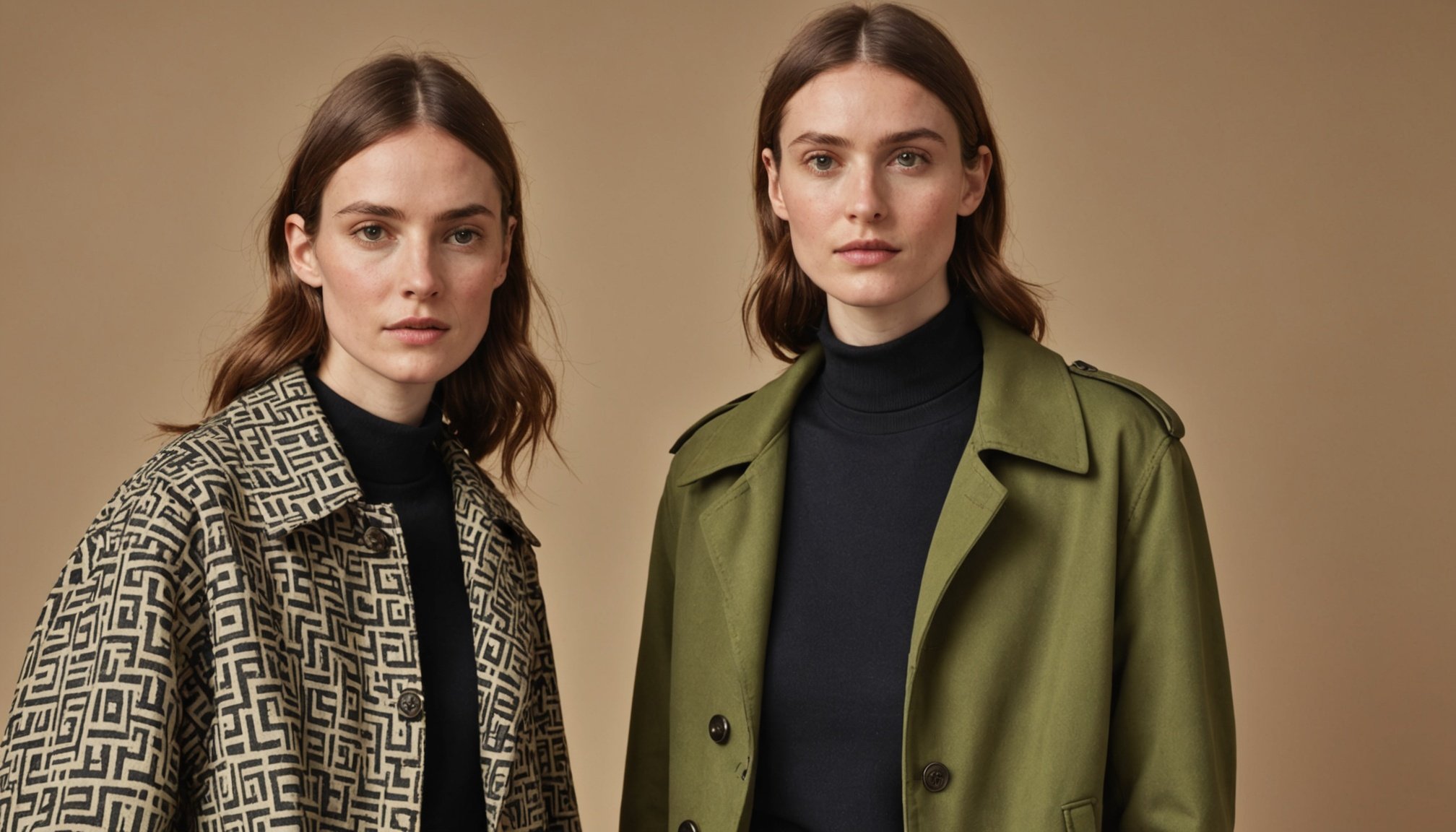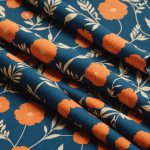Introduction to Sustainable Fashion Accessories
In recent years, sustainable fashion has gained momentum, especially within the UK brands sector, altering the landscape of the accessories market. Sustainable fashion addresses the environmental and social impact of the fashion industry, emphasizing eco-friendly practices and ethical responsibility. The surge in demand for sustainable fashion accessories reflects a growing awareness among consumers about the benefits of making environmentally conscious choices.
The UK has seen significant growth in the sustainable accessories market, with consumers becoming more discerning and opting for items that align with their values. This shift has prompted brands to adopt sustainable practices, resulting in innovative products that do not compromise on style or quality. Fashion accessories, such as bags, jewelry, and shoes, are crafted with materials that are not only stylish but also environmentally friendly.
In the same genre : Sensitive skin solutions: the definitive uk shopper”s guide to the best fabrics
Brand responsibility plays a crucial role in this landscape, as companies are now held accountable for their production choices and their overall impact on the planet. Sustainable fashion is not just a trend but a necessary paradigm shift, urging brands to rethink their strategies and consumers to reflect on their purchasing decisions, fostering a more sustainable future.
Leading UK Brands in Sustainable Fashion Accessories
As consumer interest in sustainable accessories continues to surge, several top UK brands have emerged as pioneers in this domain. These brands set themselves apart by focusing on brand innovation and environmental responsibility. But what criteria make them leaders in sustainable fashion? Primarily, they incorporate eco-friendly practices, ethical sourcing, and engage in transparent production processes. By doing so, they not only advocate but also actualize sustainable goals.
This might interest you : Discover the Best Eco-Friendly Wedding Dress Brands in the UK: A Guide to Ethical Elegance
Among the standout brands, some have left a significant imprint on the industry through their innovative approaches and commitment to minimizing their environmental impact. From using recycled materials to adopting new, sustainable technologies, these brands exemplify how creative thinking meets ecological responsibility.
Additionally, the brief history of these top UK brands sheds light on their impact. From smaller initiatives to industry trailblazers, they have influenced consumer expectations and set new standards for responsibility within the realm of accessories. This impact is twofold: shaping industry norms and nurturing consumer communities that prioritize sustainability when making purchasing decisions. Ultimately, their initiative extends beyond products, advocating for a truly sustainable ethos that reverberates through the fashion landscape.
Brand Values and Philosophy
Understanding the brand values of sustainable fashion companies reveals their commitment to ethical fashion deeply woven into their operations.
Commitment to Sustainability
Leading brands emphasize their commitment to sustainability through clear communication and actionable goals. They often showcase frameworks they follow to ensure sustainable practices, allowing consumers to make informed decisions. For instance, brands might adopt certifications or specific environmental standards, communicating these commitments via digital platforms and product tags.
Community Engagement
The essence of sustainable brands also lies in their active community engagement. By involving local artisans or launching initiatives that support community welfare, these brands generate greater goodwill. Such efforts include organizing workshops, funding local projects, or engaging in collaborative fashion shows that emphasize ethical production.
Transparency in Production
Transparency in production processes is a core tenet for these brands, informing consumers about sourcing and manufacturing methods. This transparency may entail sharing information about supply chains, revealing partnerships with ethical suppliers, or detailing the environmental impact of their production methods. This openness fosters trust and encourages consumers to engage more deeply with the brand’s sustainable mission.
Unique Product Offerings
In the realm of sustainable fashion, product uniqueness is a crucial factor driving consumer interest, especially in fashion accessories. Leading brands distinguish themselves through their use of sustainable materials. These materials include upcycled fabrics, organic cotton, and innovative alternatives like mushroom leather, offering eco-friendly choices without sacrificing style or quality.
Innovative Materials
Brands are increasingly experimenting with inventive materials. For instance, some utilize recycled plastics or ethically sourced metals in their jewelry, showcasing a commitment to reducing environmental impact. These materials not only minimize waste but also encourage a circular economy by reintroducing pre-used elements into the fashion cycle.
Distinctive Designs
The use of distinctive designs allows these brands to cater to diverse consumer tastes while promoting sustainability. Creative design teams engineer eye-catching pieces that reflect individuality and craftsmanship. This innovation in design often results in limited edition or bespoke pieces, enhancing their appeal.
Versatility of Products
Furthermore, versatility is pivotal in these offerings, as multifunctional accessories support a sustainable lifestyle. Products designed for various uses, such as handbags that convert into backpacks or reversible jewelry, contribute to reducing consumption by fulfilling multiple needs. This practicality aligns with the consumer’s desire for adaptable, long-lasting items that resonate with sustainable values.
Impact on Sustainability Trends
The fashion industry is experiencing a dynamic shift towards sustainable practices, with UK brands at the forefront driving transformative trends. These brands not only respond to consumer demand but actively shape sustainability trends in fashion. For instance, as consumers grow more environmentally conscious, leading brands have adapted by implementing innovative practices that align with these values.
Consumer awareness has increased significantly, pushing brands to re-evaluate their production methods. This shift is evident in the surge of eco-friendly materials used in crafting fashion accessories, setting a new standard for environmentally responsible production. Brands are effectively leveraging this trend to educate their audience, showcasing the value of sustainable choices through transparent communication and engaging storytelling.
Education plays a pivotal role in this transformation. By disseminating information on the impact of choosing sustainable accessories, these brands not only enhance their reputation but empower consumers to make informed decisions. This active engagement is crucial for long-term change, fostering a marketplace that prioritizes sustainability. Through such initiatives, brands are instrumental in creating a more sustainable future, highlighting their commitment to both the planet and their customers.
Visual Engagement and Consumer Education
In the realm of sustainable practices, visual engagement plays an instrumental role in capturing and retaining consumer education. High-quality visuals are not merely aesthetic; they serve as persuasive tools emphasizing the appeal and ethical stance of sustainable products. This helps consumers connect emotionally with the brand’s philosophy, strengthening the narrative of ethical production.
Importance of Visuals in Marketing
The significance of visual content in marketing cannot be understated. Vibrant imagery and engaging videos are critical in illustrating the unique attributes of sustainable products. For example, showcasing the process of creating fashion accessories from sustainable materials provides transparency and educates consumers about the benefits of ethical sourcing.
Educational Resources Offered
Leading UK brands often accompany their visuals with educational resources, enriching the consumer’s understanding of sustainable fashion. These resources can include infographics, detailed guides, or interactive sessions, which collectively nurture an informed buyer community.
Brand Social Media Influence
Social media acts as a powerful platform for brands to reach and influence wider audiences. When brands use impactful visuals and share educational content via social media channels, they effectively raise awareness of sustainable practices and promote responsible consumer choices, bridging the gap between awareness and action.
Recommendations and Resources
When delving into the world of sustainable fashion, it’s crucial to have a curated list of top brands and reliable resources. This not only aids in making informed decisions but also ensures alignment with ethical values. Sustainable fashion recommendations guide consumers towards brands that champion eco-friendly practices and innovative designs, ensuring they feel good about their purchases.
Curated List of Brands
-
Lucy & Yak: This brand stands out for using organic cotton and championing fair wages in their manufacturing process.
-
Stella McCartney: Renowned for luxury products that don’t compromise on sustainability, focusing on plant-based materials and recycled fabrics.
Resource Exploration
Consumers interested in delving deeper into sustainable brands can explore dedicated resources that provide insights into brand values. Websites focused on sustainable fashion offer articles, brand directories, and updates on emerging sustainable practices.
Encouraging Responsible Consumerism
Ultimately, embracing sustainable fashion leads to more responsible consumerism. By consulting brand resources, consumers can align their purchasing decisions with both fashionable and ethical considerations, contributing positively to the environment. With consumer guidance readily available, individuals are empowered to support brands that prioritize sustainability and transparency.











